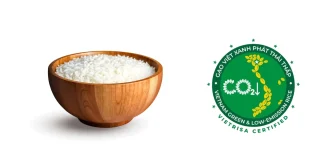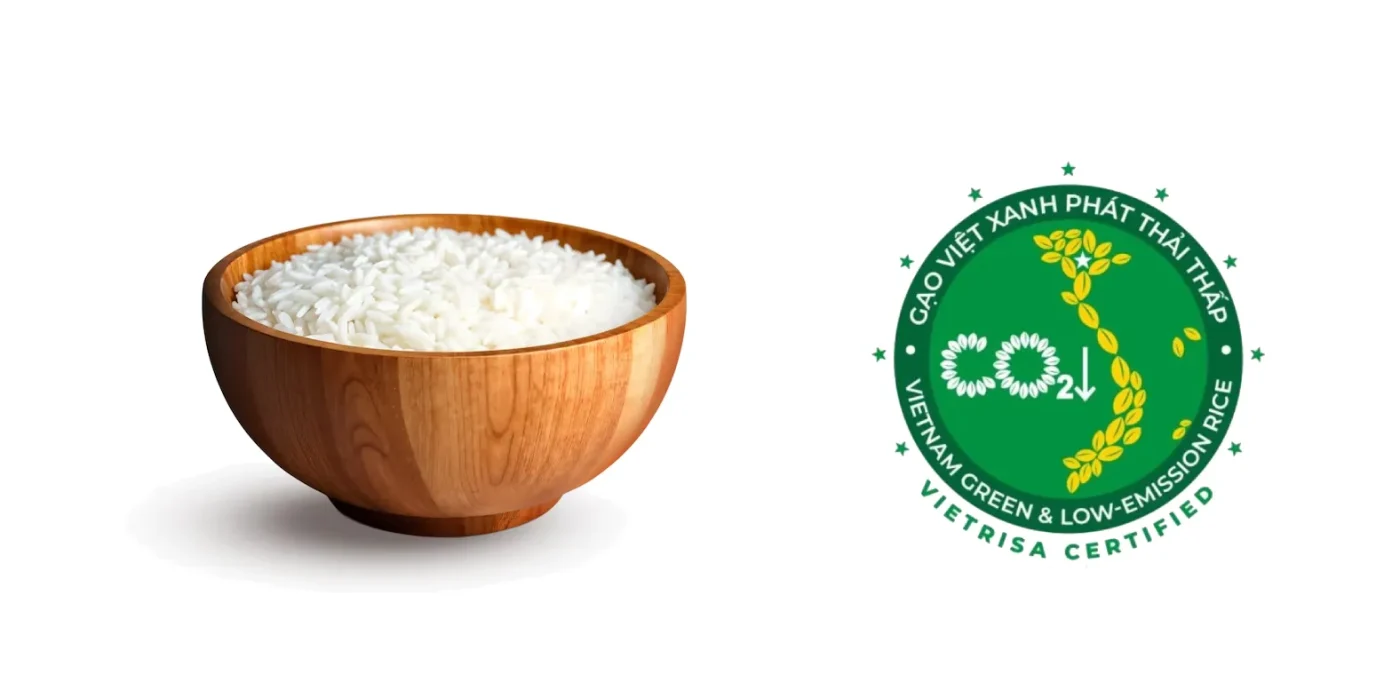In a landmark moment for Vietnam’s agricultural sector, the “Green and Low-Emission Vietnamese Rice” trademark is set to make its debut on the international stage. On June 5, 2025, the first shipment of this certified rice will head to Japan, marking a significant step forward for the country’s rice industry as it targets high-end markets with stringent environmental standards. This initiative, tied to an ambitious sustainability project in the Mekong Delta, signals Vietnam’s commitment to balancing agricultural growth with ecological responsibility.
A Milestone for Sustainable Agriculture
The launch of this trademark is the first tangible success of the “Sustainable Development of One Million Hectares of High-Quality, Low-Emission Rice Associated with Green Growth in the Mekong Delta by 2030” project, commonly referred to as the one-million-hectare rice project. Spearheaded by the Vietnam Rice Industry Association (VIETRISA) with support from the Ministry of Agriculture and the Environment, the project aims to transform rice cultivation in the Mekong Delta, a region often called Vietnam’s “rice bowl,” into a model of sustainability.
Bùi Bá Bổng, Chairman of VIETRISA, described the export as a “strategic milestone” in building the Vietnamese rice brand globally. “This is not just a commercial label, but a commitment to environmental and social responsibility” he said. The certification seeks to assure international buyers that the rice meets rigorous standards for low carbon emissions, a growing priority for markets like Japan and the European Union, where consumers and regulators increasingly demand eco-friendly products.
Certification and Traceability Standards
The “Green and Low-Emission Vietnamese Rice” certification, developed by VIETRISA in collaboration with the TRVC Project, has been awarded to seven enterprises responsible for 19,200 tonnes of rice. Among them, Trung An Company, in partnership with Japan’s MURASE Group, will lead the inaugural export to Japan. To earn this certification, enterprises and cooperatives must adhere to strict traceability protocols, documenting the origin of rice production, the variety used, and the crop season. Production processes must also comply with technical guidelines set by the Department of Crop Production and Plant Protection.
Lê Thanh Tùng, Permanent Vice Chairman and General Secretary of VIETRISA, emphasized the importance of transparency. “The association will issue the certification to ensure credibility” he said. However, in the absence of a national certification system for low-carbon rice, enterprises are currently allowed to self-declare their green branding, though they remain accountable for the accuracy of their claims. Tùng noted that a comprehensive measurement, reporting, and verification system is being piloted, but full mechanisms for payment, measurement, and valuation are not expected to be finalized until 2028.
Impacts on Farmers and Food Security
Over the past two years, the one-million-hectare project has already shown promising results for its two primary beneficiaries: the rice itself and the farmers who cultivate it. The initiative’s goals are multifaceted, aiming to ensure national food security, meet the nutritional needs of Vietnam’s growing population, increase farmers’ incomes, protect the environment, reduce greenhouse gas emissions, and maintain the country’s status as one of the world’s leading rice exporters.
The Mekong Delta, which produces over half of Vietnam’s rice output, is particularly vulnerable to climate change, with rising sea levels, salinity intrusion, and extreme weather threatening livelihoods. By promoting low-emission farming techniques—such as alternate wetting and drying irrigation methods, which reduce methane emissions from flooded rice paddies—the project seeks to mitigate these risks while enhancing the region’s global competitiveness. For farmers, the certification offers the potential for higher earnings through access to premium markets, though challenges remain in scaling up adoption of new practices and ensuring equitable benefits.
Economic and Environmental Implications
Vietnam is the world’s third-largest rice exporter, behind India and Thailand, with annual exports valued at billions of dollars. In 2024, the country exported approximately 8.3 million tonnes of rice, generating revenues of over 5 billion Vietnamese Dong (US$200 million), according to data from the Ministry of Agriculture. The introduction of a green certification could further boost export value by appealing to environmentally conscious markets, where demand for sustainable agricultural products is on the rise.
However, the transition to low-emission rice production is not without hurdles. The cost of implementing sustainable practices, such as investing in new irrigation systems or training farmers, can be significant, particularly for smallholder farmers who dominate the Mekong Delta’s agricultural landscape. While the government and VIETRISA have pledged support, questions linger about the adequacy of funding and technical assistance. Additionally, the delay in establishing a national verification system until 2028 may create inconsistencies in how “green” claims are substantiated, potentially risking consumer trust if not managed carefully.
Environmentally, the project holds immense promise. Rice cultivation is a major source of methane, a potent greenhouse gas, due to the anaerobic conditions of flooded paddies. By targeting one million hectares—roughly a fifth of Vietnam’s total rice-growing area—the initiative could significantly reduce the sector’s carbon footprint. If successful, it may also serve as a blueprint for other rice-producing nations in Southeast Asia, where similar environmental challenges loom large.
Global Context and Market Opportunities
The launch of the “Green and Low-Emission Vietnamese Rice” trademark comes at a time when global agricultural markets are undergoing a profound shift toward sustainability. Countries like Japan, with its stringent import standards, are increasingly prioritizing products that align with carbon reduction goals. Vietnam’s ability to meet these demands could position it as a leader in the niche market for eco-friendly rice, potentially outpacing competitors who have yet to adopt similar certifications.
Japan, the destination for the first shipment, represents a lucrative opportunity. With a population willing to pay a premium for high-quality, sustainable goods, Japanese consumers could become a key demographic for Vietnamese exporters. Beyond Japan, markets in Europe and North America, where environmental regulations are tightening, offer further potential for growth. However, Vietnam will need to navigate complex trade agreements and certification requirements to fully capitalize on these opportunities.
Analysts also point to the broader geopolitical context. As Southeast Asian nations strengthen economic ties through frameworks like the Regional Comprehensive Economic Partnership (RCEP), Vietnam’s focus on sustainable agriculture could enhance its standing within the bloc. At the same time, competition from regional players like Thailand, which is also investing in sustainable rice initiatives, underscores the need for Vietnam to differentiate its brand through rigorous standards and transparent practices.
Challenges and Future Outlook
While the debut of the green certification is a cause for optimism, several challenges lie ahead. Ensuring that smallholder farmers, who often lack access to capital and training, can participate in the program is critical to its long-term success. Without inclusive policies, there is a risk that the benefits of higher export revenues will be concentrated among larger enterprises, exacerbating inequality in the Mekong Delta.
Moreover, the absence of a national certification framework until 2028 raises concerns about accountability. If enterprises overstate their environmental claims, it could undermine the credibility of the “Green and Low-Emission Vietnamese Rice” trademark before it has a chance to establish itself. VIETRISA’s role in issuing certifications and monitoring compliance will be pivotal in maintaining trust among international buyers.
Looking forward, the one-million-hectare project and its associated trademark represent a bold experiment in aligning agricultural development with global sustainability goals. As the first shipment sets sail for Japan, Vietnam stands at a crossroads, with the potential to redefine its rice industry as a model of green innovation. Yet, the road to 2030 will require sustained investment, robust policy support, and a commitment to ensuring that no farmer is left behind in this transition.
As Vietnam’s rice takes its place on the world stage, the question remains: can this green revolution deliver on its promises, both for the environment and for the millions who depend on the Mekong Delta’s fertile fields?
















